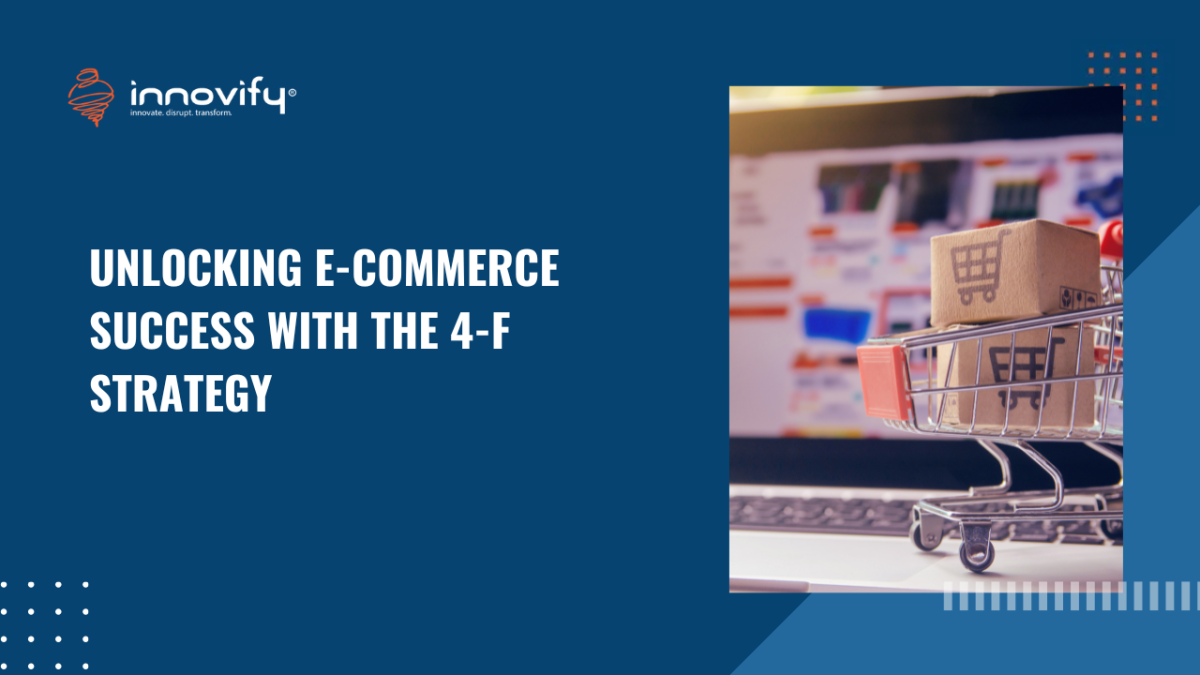AI/ML
UNLOCKING E-COMMERCE SUCCESS WITH THE 4-F STRATEGY
An ecommerce development marketplace solution will only be successful if you get the speed, functionality, familiarity, and flexibility of the site right. This is called the 4-F strategy and it ensures your online business is sustainable and profitable.
Most ecommerce development and marketplaces solution companies believe setting up platforms like Magento, Shopify OpenCart, Zen Cart, WooCommerce and many more of similar nature is what an ecommerce product essentially needs. No doubt this is required, but that shall only create the skeleton, the soul can be brought in only if we follow the right strategy which is beyond technology.
However, one should also not forget that the right strategy must be preceded by the right idea. E.g. if you are building a marketplace, the question uppermost in your minds should be – Is there a need for this marketplace in the larger ecommerce scheme of things? This must be followed by – Is my ecommerce offering markedly different from my competitors and if no, how can I achieve ‘product differentiation’.
Now, here the thing – Not every business founder has got the right business idea. This is why you must partner with an online marketplace and ecommerce development company that helps you build a product right from scratch, which is from Minimum Learning Product (MLP) to Minimal Marketable Product (MMP)
Once you zero in on the idea facilitator and builder, the 4-F Strategy kicks comes into play.
The 4-F strategy for ecommerce store development rests on four pillars: YOUR ECOMMERCE WEBSITE MUST BE FAST, FUNCTIONAL, FAMILIAR, AND FLEXIBLE!
1. FAST ONLINE MARKETPLACE

This aspect is of critical importance because you need speed in all areas of your business, not just your online retail ecommerce store. Customers have so many different options online, so why would they wait on you?
This encompasses your hosting, site load speed, email responses and your website ordering and checkout process. Just as an example, if your site is slow to load, a customer will more often than not leave right away. A slow loading site, impacts your bottom line.
The following site components increase the ‘speed’ of your ecommerce business:
- Fast & Reliable Hosting
- Fast Site Load Speed (Maximum 5 seconds per page)
- Compressed & Fast Images
- Fast and Efficient Ordering
- Fast Checkout with as Few Steps as Possible
- Fast Security (SSL Certificate)
A fast ecommerce business ecosystem, speeds up customer decision making and by association facilitates faster purchases, which results in an increased number of transactions, leading to better ROI and profitability.
2. FUNCTIONAL ONLINE RETAIL ECOMMERCE STORE

Decide from day one, the desired outcome and goal of your online marketplace or ecommerce store. When your potential customers visit your site, can they find a product they are looking for right away with as little hassle and clicks as possible?
Customers are simply going to look elsewhere if it is difficult to purchase products from you! Take the time to think like your customer and complete all of the steps in finding a product on your site and placing an order.
Was it easy, does it make sense and would you want to do it again?
Load your website with useful functional features:
- Use clean, easy to read text, graphics, and navigational buttons
- Make it easy to use and navigate
- Use common features making your visitors’ experience helpful
- Give customers what they want in as few clicks as possible
- Use features like AI (chatbots) (link to chatbots article) and immersive technologies such as AR and VR
Inability to understand the market or customers can be fatal – Yahoo is a prime example. Among all the things that have gone wrong for Yahoo, perhaps the biggest is the way it has projected itself to its customers.
Read more in the Whitepaper – Download now.
3. FAMILIAR B2B ECOMMERCE SITE

It is important for customers to feel comfortable on your website, which has everything to do with your chosen layout, structure and usability. For instance, if you use strange navigational methods, if it is incredibly difficult for a customer to search for products, find products and buy products, then they will leave your site as quickly as they can click the ‘back’ button in their browser.
You Need to Have Clear and User-Friendly Site Elements:
• Clear Layout & Structure
• Common Navigation Bar & Obvious Buttons
• Left Menu
• Header & Footer
• Clear Text with Headlines & Sub Headlines for Easy Scanning
• Display Trusted Brands & Logos
• Display Accreditations, Card & Security Logos to Establish Trust
4. FLEXIBILITY AND GROWTH

Ultimately, you need to decide what your objectives are. Be flexible and don’t get too carried away with web-specific ambitions. You do not have to use software that is very expensive and complex; use things that mesh closely with your business’s objectives instead. Then make sure the ecommerce development process gets an ecommerce website out there and add functionality, as and when users demand. You will never get your site perfect from day one, so test and modify as you grow.
The 4-F Strategy will not prove useful if your business isn’t listening to its customers. Irrespective of whether you are a multi-vendor B2C ecommerce site or a B2B ecommerce site, it is imperative you are able to offer an extremely engaging and customer-centric shopping experience. Listen to your customers and reap the resulting benefits.
This essentially will bring closure to the 4-F Strategy in the form of ROI and profitability.




